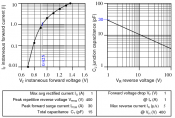HI,
I have Buck converters which output to 5 volt.
Is their a way I can restrict the out put to 5 volt between the buck and the pixel strip, by way of a fuse or some type of resistor.
I have heard that when or if the buck fails, the voltage increases, resulting to damage to the pixels
Thanks in advance
Deblen
I have Buck converters which output to 5 volt.
Is their a way I can restrict the out put to 5 volt between the buck and the pixel strip, by way of a fuse or some type of resistor.
I have heard that when or if the buck fails, the voltage increases, resulting to damage to the pixels
Thanks in advance
Deblen


